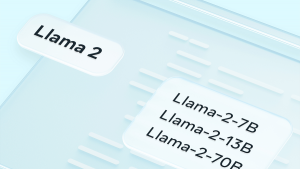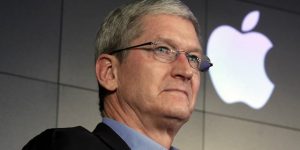How VMware is tackling the final obstacles towards a fully-automated hybrid cloud | #vmworld
![]() This morning I received a story suggestion for our coverage of the VMworld conference going on this week – a decoder ring of products from the event host VMware, Inc. Given VMware’s latest product launches and rebranding efforts, that story suggestion is sounding better and better. Announced in the days leading up to VMworld and during the conference, VMware is building the hype around its new and updated products with parallel marketing, raising questions about the company’s direction.
This morning I received a story suggestion for our coverage of the VMworld conference going on this week – a decoder ring of products from the event host VMware, Inc. Given VMware’s latest product launches and rebranding efforts, that story suggestion is sounding better and better. Announced in the days leading up to VMworld and during the conference, VMware is building the hype around its new and updated products with parallel marketing, raising questions about the company’s direction.
One new product is called EVO:RAIL, for converged infrastructures, a solution that delivers appliances with the help of strategic partnerships. Another partner solution is SAN Ready Nodes for appliance architectures.
Other products have been updated and rebranded, like vCloud Hybrid Service (vCHS) being renamed vCloud, while vCOPS is now vRealize. The new brand names are certainly easier to remember and speak to VMware’s determination to better market its product line. But do these updates indicate a new direction for the company, and what do they mean for customers?
Three analysts from Wikibon.org discuss these questions during a live panel on SiliconANGLE’s roving news desk, theCUBE, stationed at VMworld all week. Wikibon Co-founders Dave Vellante and David Floyer joined Senior Analyst Stu Miniman to review VMware’s current strategy.
Is VMware getting into the hardware game?
One of the first topics tackled was the question of VMware getting into hardware, and whether or not the virtualization company is going after disruptors like Nutanix, Inc. and SimpliVity, Inc.. Miniman does not think that VMware is getting into the hardware business, but is extending existing products with the new options mentioned above. The SAN Ready Nodes for instance is an extension of VMware’s vSAN product line, with EVO:RAIL easing a company’s journey to hyperconvergence architecture. Miniman revealed that VMware will release a cloud version of EVO:RAIL in the coming months, called EVO:RACK.
While VMware’s new solutions rely on strategic partners, it’s important to note who those partners are (and are not). Missing from the new product line is participation from Hewlett-Packard, Co. and Cisco Systems, Inc., one of the core partners comprising VCE, the converged infrastructure offering with cooperation from VMware, Cisco and EMC Corp. Miniman noted that VMware’s new products are not a reference architecture, and have partnered with Dell, EMC and a handful of Asian suppliers that are not ODMs but the “small guys” that are experienced with custom hardware configurations.
VMware sets out to cover all types of workloads, cheap
VMware’s burgeoning support for open source framework OpenStack is also raising questions on the company’s overall strategy, as the camera turned to Floyer. He reiterated VMware’s goals around hybrid cloud offerings and the importance of hybrid for customers. The key, Floyer said, is to cover all types of workloads at a cost that’s commensurate with the workload. “you want to be able to use OpenStack when it’s cheapest, and use Vmware for the high end stuff,” Floyer explained, going on to say that “you want an open environment to use Amazon.com Inc.’s Amazon Web Services (AWS), OpenStack, and Microsoft Corp.’s Azure as part of a hybrid cloud, not just VMware.”
VMware is making several moves to support hybrid cloud development for good reason. In a recent survey by Tech Pro Research, 70 percent of respondents are currently evaluating a hybrid cloud solution for their respective companies, seeking out the best of both public and private cloud environments. A third of the survey respondents have already begun implementing a hybrid cloud solution, validating expectations that 68 percent of organizations will adopt some sort of a hybrid cloud solution over the next two years, per this Microsoft-commissioned study.
Read more after the video.
For Floyer, the key to achieving a hybrid cloud is orchestration, automation of the fundamental provisioning, and getting rid of all the “junk” in the data center, he said.
“In order to do that you need to be providing the capabilities from top to bottom, including storage, in reducing the cost. What we’ve been looking at is, what platforms provide that hybrid cloud and how is storage going to deal with these environments?” Floyer explained, noting that storage is the most difficult of all and VMware has come out with vSAN and other products to make storage connect directly to the document management system (DMS).
This direct connection to storage casts a wider net for VMware in terms of its own storage capabilities, putting the connection at the virtual machine (VM) level instead of an abstraction. The benefit to connecting directly to storage is that an application can be stored and connected directly to the VM across the entire set, making it easier to provision and, as Floyer pointed out, can give a particular VM the precise set of services needed to manage that application.
Remaining obstacles to the fully automated hybrid cloud
The journey to the hybrid cloud has come a long way in the past few years, but there’s still a ways to go. The analysts go on to look at the remaining obstacles to achieve a truly hybrid cloud offering that’s cost-efficient and scalable, reviewing recent Wikibon studies and sharing a series of charts that rank services capabilities towards hybrid cloud solutions.
As far as enterprise needs go, virtual servers are the only components of the hybrid cloud journey that have gotten very far along, with things like manual provisioning and virtual networking still low on the list.
Fundamental to the hybrid cloud is virtualized storage and networking, both of which remain half-baked for hybrid purposes. While there have been improvements like Flash, “the implementation of virtualized networks needs to be improved to get the final VM technologies to the hybrid,” Floyer said.
Once networks and storage are virtualized, “you’re looking at Storage as a Service that you can apply to a fully automated privisioning at scale, with all the parts of storage (including block storage, file storage, object storage and Big Data),” explained Floyer. “The ones low on this journey – APIs for other platforms like AWS and Big Data (HDFS) – you want to connect on a lower cost,” Floyer furthered.
With two crucial components missing from a fully automated hybrid cloud, Vellante wondered if virtualized storage and networks will become the new battleground for vendors. Floyer thinks so.
“Consistency groups aren’t good inside Vmware,” Floyer started, noting the competition from smaller practitioners that can provide better consistency at the application level.
Start your hybrid cloud now
Despite the remaining challenges, Floyer recommended that organizations begin their journey to the hybrid cloud now, noting the real value is going to be the company’s ability to get new apps in faster, delivered to the end user.
Where should organizations begin their journey? According to Floyer, the whole company needs to get on board to improve their abilities and seek out hybrid solutions that can be added now, such as orchestration and information, to make the company’s applications better.
But if the hybrid cloud hasn’t been fully automated just yet, why would an organization choose to piecemeal an in-house solution instead of just outsourcing everything to a public cloud like Amazon?
The public cloud can’t yet support high level applications at scale, Floyer said, explaining that these mission-critical apps don’t outsource very well.
photo credit: zachstern via photopin cc
A message from John Furrier, co-founder of SiliconANGLE:
Your vote of support is important to us and it helps us keep the content FREE.
One click below supports our mission to provide free, deep, and relevant content.
Join our community on YouTube
Join the community that includes more than 15,000 #CubeAlumni experts, including Amazon.com CEO Andy Jassy, Dell Technologies founder and CEO Michael Dell, Intel CEO Pat Gelsinger, and many more luminaries and experts.
THANK YOU



















